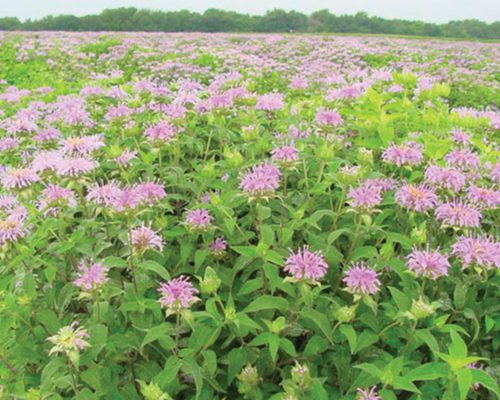
Learning Download: How to Grow Bee Balm
From Seed to Harvest: A beginner’s guide to growing Bee Balm.
Bee balm, also known as Monarda or wild bergamot, is an herb with pretty flowers and aromatic foliage. It is a perennial that is a part of the mint family, and it attracts beneficial insects to the garden. The bee balm plant is native to North America and has a shape similar to that of a daisy, but its petals are tubular and come in various colors. Bee balm plants can reach 4 feet high but dwarf varieties grow to a height of about 10 inches, which make it good for a container.
IN addition to being a pretty flower in the garden, bee balm flowers are edible and can be added to salads. Bee balm leaves can be added to soups and stews for flavoring.
To plant:
Although bee balm should be planted in rich soil in a sunny area, it can tolerate some shade, especially during the heat of the summer. As soon as the danger of frost has passed, plant seeds 1/8 inch deep and 12 inches apart if planting in the garden. Keep the soil evenly moist until the seeds sprout.
To grow:
Bee balm can fall victim to powdery mildew, which looks like gray dust appearing on the buds and leaves. If this happens, treat the plant with a fungicide. Powdery mildew can be prevented by planting bee balm in an area with good air circulation and not watering the planting from overhead. To encourage more growth, deadhead the dead flowers on the plant. Add mulch around the plant to protect the roots from high heat in the summer.
If the plant needs support, add stakes to the stems by placing stakes near the plant and gently tying the stems to the stakes. In the fall, cut the stems back to 2 inches and cover the plant’s base with cut leaves or compost.
To harvest:
Once bee balm flowers begin to bloom, pick them often to encourage more growth. Harvest them by cutting 8 to 10 inches worth of stem. If using for teas, tie the stems together and hang upside down until the flowers dry and are brittle to touch. Then, crush the stems, leaves and flowers and store in a sealed container.
What bee balm craves:
Prior to planting bee balm, add 1 inch of compost to the site in which the seeds will be planted. Work the compost into the soil. Since bee balm is a perennial, it returns each year. Fertilize the plant once a year in the early spring with a 10-10-10 fertilizer. Sprinkle the fertilizer on the surface of the soil covering the plant’s roots.
Where to buy bee balm seeds:
You can find bee balm seeds that will attract butterflies, bees and hummingbirds at Urban Farmer.

